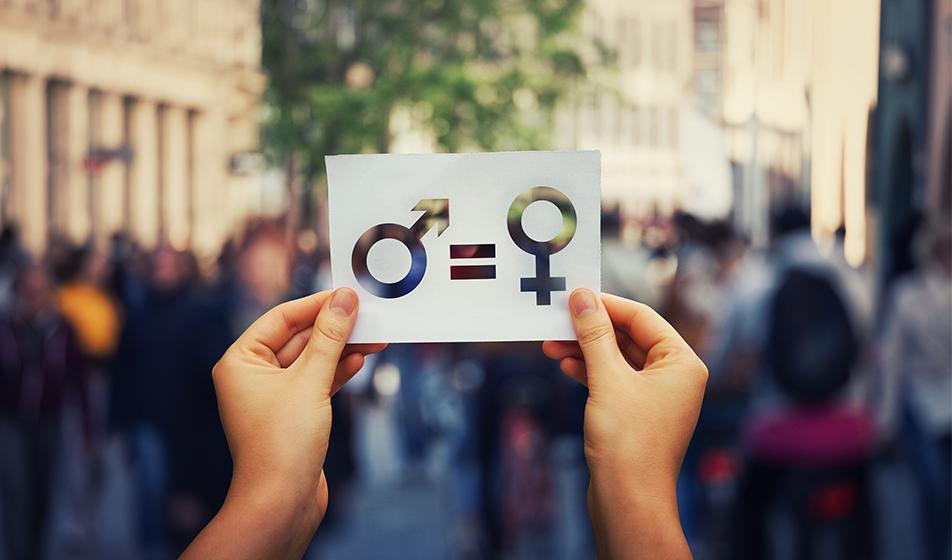Ageism describes prejudice and prejudicial behaviour towards people based on their age. The term ageism (also called age discrimination) was originally coined by the gerontologist Robert Neil Butler in 1969. Similarly damaging to racism and sexism, ageism involves holding negative stereotypes about people of different ages.
The term applies equally to any type of age-based discrimination. It includes prejudice against children, teenagers, adults or senior citizens.
Younger people joining the workplace for the first time, for instance, may have trouble finding employment and be paid less than older employees due to a perceived lack of knowledge and experience. Older people, on the other hand, may find it difficult to achieve promotions, find new work or change careers.
Age discrimination in the UK has been illegal since 2006, with the law incorporated into the Equality Act 2010.
How common is workplace ageism in the UK?
What are effects of ageism in the workplace?
Workplace ageism and UK employment law
The financial cost of age discrimination
Five steps for eliminating ageism in the workplace
How common is workplace ageism in the UK?
Recent research conducted by 55/Redefined revealed that the majority (65%) of older workers believe the jobs market is closed to them by the time they reach 55. More than half (56%) of employees want to continue to work past age 65.
In an earlier survey conducted by job-listing site CV-Library, researchers found that almost three-quarters of UK workers feel age discrimination is common in the workplace, with both the youngest and oldest feeling most aggrieved.
The survey of 1,400 workers also found that over half of under 18s feel they’re not taken seriously at work, and three-quarters of 25- to 34-year-olds consider themselves having been discriminated against for being “too young”.
What are effects of ageism in the workplace?
Age discrimination is very clearly a significant problem for many businesses and something which needs to be addressed as a matter of high priority. It damages people who are treated unfavourably because of their age and can effect both their physical and mental health. This, in turn, reduces their morale, engagement levels and productivity which can affect organisational performance, especially in SMEs with relatively small teams.
These days, it’s easy for job seekers to research companies before applying for positions and more applicants than ever before are prioritising positive and inclusive company cultures which put people first. This is something we discuss at length in our 2021 Culture Economy Report.
Along with racism and sexism, evidence of ageism is evidence of an unhealthy culture where prejudice is tolerated. Evidence is not hard to find online if an organisations has been deemed negligent by an Employment Tribunal. Ageism damages people, company cultures, and the reputation of organisations for whom a victim works.
At a time when so many businesses are struggling to recruit and retain people, it will be those companies who can demonstrate strong cultural values where equality is a priority, who will win today’s recruitment race.
Workplace ageism and UK employment law
Under the Equality Act 2010, employees are protected from age discrimination in all aspects of their employment including recruitment, employment terms and conditions, promotions and transfers, training and dismissals.
The Equality Act protects people from direct discrimination, indirect discrimination, harassment and victimisation. Four examples of what these might include are listed below:
Direct discrimination If your employer says he / she will not promote an employee because you’re 'too old' or ‘too young’.
Indirect discrimination If an employer offers a training course only to recent graduates, this could constitute indirect discrimination, as it could exclude older employees.
Harassment If team members make jokes about a colleagues’ age which were offensive, or comments were made about the age of someone they associate with, such as a younger or older partner, this would be harassment.
Victimisation For example, if an employee is passed over for a promotion that they would otherwise have been given, after making a witness statement supporting a colleagues’ complaint of age discrimination.
There are many, many more detailed examples of workplace discrimination available such as this excellent practical guide which includes real-life cases.
The financial cost of age discrimination
Successful claims against organisations which an Employment Tribunal has found guilty of ageism can be costly. The Court of Appeal have set out 3 bands of compensation guidelines for injury to feelings, depending on the seriousness of the case. These are commonly known as the “Vento” guidelines, and from 6th April 2021, they are:
- Top band for the most serious cases: £27,000 – £45,600 (although it can exceed this in exceptional cases)
- Middle band: £9,100 – £27,400
- Lower band for less serious cases (e.g. a one-off or isolated incident of discrimination): £900 – £9,100
Five steps for eliminating ageism in the workplace
So far, we’ve defined and discussed age discrimination and the implications for victims of all ages, and for their employers. But what active steps can organisations take to eliminate this form of prejudice and create a level playing field for all? Here are five tips for combating age discrimination:
-
Understand the issue
Carry out an internal audit. This means taking a 365-degree view of everything from your recruitment procedures and employment terms and conditions through to policies governing promotions, training, redundancies, and dismissals.
It’s also important to assess your team members, including senior management and their team members. Ageism is sometimes based on unconscious bias and extant in people who wouldn’t dream of making sexist or racist remarks. Stereotypical attitudes towards the young and old are still regarded by some people as humorous.
-
Develop and publicise a policy
It’s important to document your policies regarding equality in the workplace and make these available to everyone in your organisations. Again, some people may be unaware that ageism is every bit as serious as sexism and racism. Policies should clearly set out the process for investigating and managing complaints, alongside making it clear that ageism is serious grounds for disciplinary action.
Use a dedicated HR software system like Breathe to store your policies and make these easily available to everyone in your company. Breathe includes document management functionality which makes this quick and easy to achieve.
-
Make sure your leaders are on-board
Make sure your leaders are not only aware of your policy but are also actively communicating the benefits of intergenerational working. Encourage reverse-mentoring sessions where people of different ages can learn from each other. Workers of any age can pass on their experience – upwards and downwards – and help others develop through their unique knowledge and skills.
-
Train to grow awareness and prevent ageism
Equality training is a very specific area of HR management and if you don’t have an in-house resource, consider bringing in an expert who can, perhaps, talk about age discrimination alongside sexism and racism.
-
Rethink promotions and training
Opportunities for training, promotions and career development should be open for all, regardless of age. This may mean fundamentally rethinking how you currently select people for new opportunities and considering people you perhaps wouldn’t haven’t considered in the past.
Final thoughts…
Age discrimination is illegal but, more than regulatory demands, fairness at work and tackling discrimination helps to attract, motivate, and retain multi-generational staff, as well as enhancing your reputation as an employer.
Combating and eliminating age-discrimination should be a priority for every SME and is every bit as important as driving out racism and sexism. Sadly, there are organisations where prejudice is still rife and rarely a week goes by without a story appearing in the media about inappropriate and prejudicial behaviour- and sometimes at board level.
Being smaller and leaner, SMEs can turn more quickly than large businesses to address discrimination in the workplace. They can build inclusive cultures where all people are put first, and where equality is celebrated as a guiding principle.
Useful contacts
ACAS – Discrimination, bullying and harassment
GOV.UK - Employers: preventing discrimination
Equality and Human Rights Commission - Age discrimination
The Age and Employment Network (TAEN)
Business in the Community - Age at Work Campaign
Additional resources
ACAS (2019) Age discrimination: key points for the workplace. London: Acas.
Altmann, R. (2015) A new vision for older workers: retain, retrain, recruit. London: Department for Work and Pensions
Centre for Ageing Better (2019) Mid-life support: insights for employers. London: The Centre.
UK Commission for Employment And Skills (2015) Catch 16-24: youth employment challenge. London: UK Commission for Employment and Skills.

Author: Aimée Brougham-Chandler
An IDM-certified Digital Copywriter as of February 2023, Aimée is Breathe's Content Assistant. With a passion for guiding readers to solutions for their HR woes, she enjoys delving into & demystifying all things HR: From employee performance to health and wellbeing, leave to company culture & much more.
Posted on 3 December, 2021
Equality and diversity



.webp)
